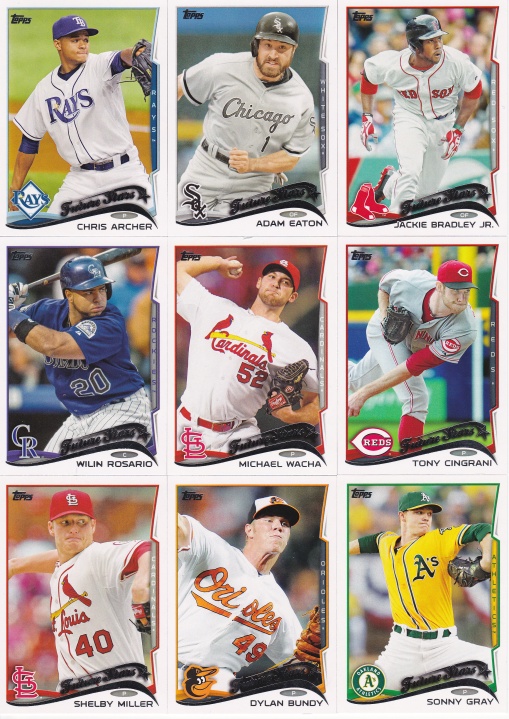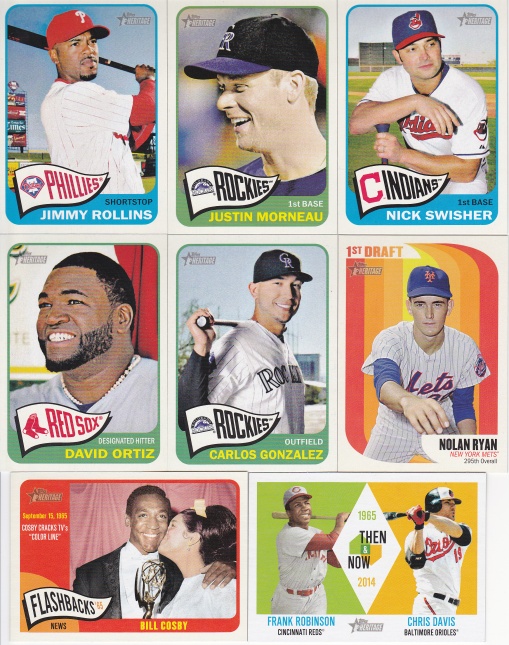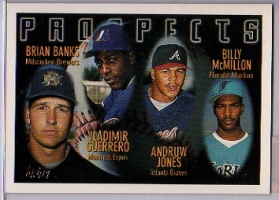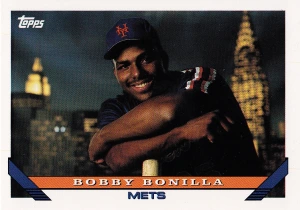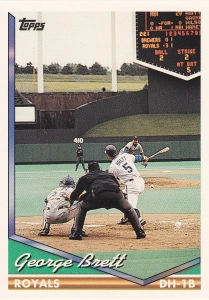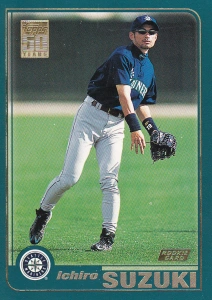I finally ponied up and got boxes for the rest of the Topps 2014 flagship product. I got two boxes last month – one for series 2 and one for Update which had just been released. I got a Jumbo HTA box for Update, but a regular hobby box for series 2. That’s usually against my mantra – I think the jumbo boxes are much better values. But series 2 seemed to be much pricier than Update, so I went with the cheaper option.
In series 1, Topps included cards of 2 HOF-caliber players who had retired the year before, so you got their full career statistics. I noted they were missing one other retiree who was on that level – and in series 2 they did include Roy Halladay. His final stat line includes 203 wins, 2,117 strikeouts and 3.38 ERA. I think he’s HOF-worthy, though I really wasn’t expecting him to fall off the map so quickly in 2012 and 2013.
Topps also included 2 other recent retirees – though these 2 teammates retired at the end of 2014. This could be Konerko and Dunn’s last cards, though I hope they have a final card in next year’s set.
Topps always likes to get some of the rookie phenoms into series 2, and this year the top two Rookie of the Year candidates in the AL were guys who had played professionally overseas. The National League equivalent, Jacob Degrom, made his way into the Update set.
Funny how I’ve shown 3 White Sox first baseman in the past two photos.
Topps also finishes up the Rookie Cup cards in series 2 – after 6 cards in the first series, there were 5 more in this product.
About 15 years ago, Topps started getting a lot of the new free agent signings into series 2, as opposed to Topps Update. I think Clemens may have been the first one back in 1999. Here’s the biggest names in new uniforms this year.
New this year but back from series 1 is the Future Stars subset. There were 10 guys in series 1, and 12 (at least) in series 2. That’s too many Future Stars for my liking! I liked the 5 players from 87/88/89/90/91!
Celebration was a theme of this set in both series 1 and series 2. There’s a few in this series as well.
Here’s a few action shots I liked – funny how all of them are horizontal action shots. The Lorenzo Cain is my favorite, but the Russell Martin is particularly interesting since that’s now an outlawed play!
And there are also a few really good non-action photos – two of them from my Reds squad. Gotta love Great American Ballpark shown in the background!
The other thing that’s included in series 2 are all the award winners. I miss the days where subsets looked more distinct from the base sets.
Last but not least, series 2 is one half of the regular set – so it naturally has some of the better players in the game for, well, regular reasons.





